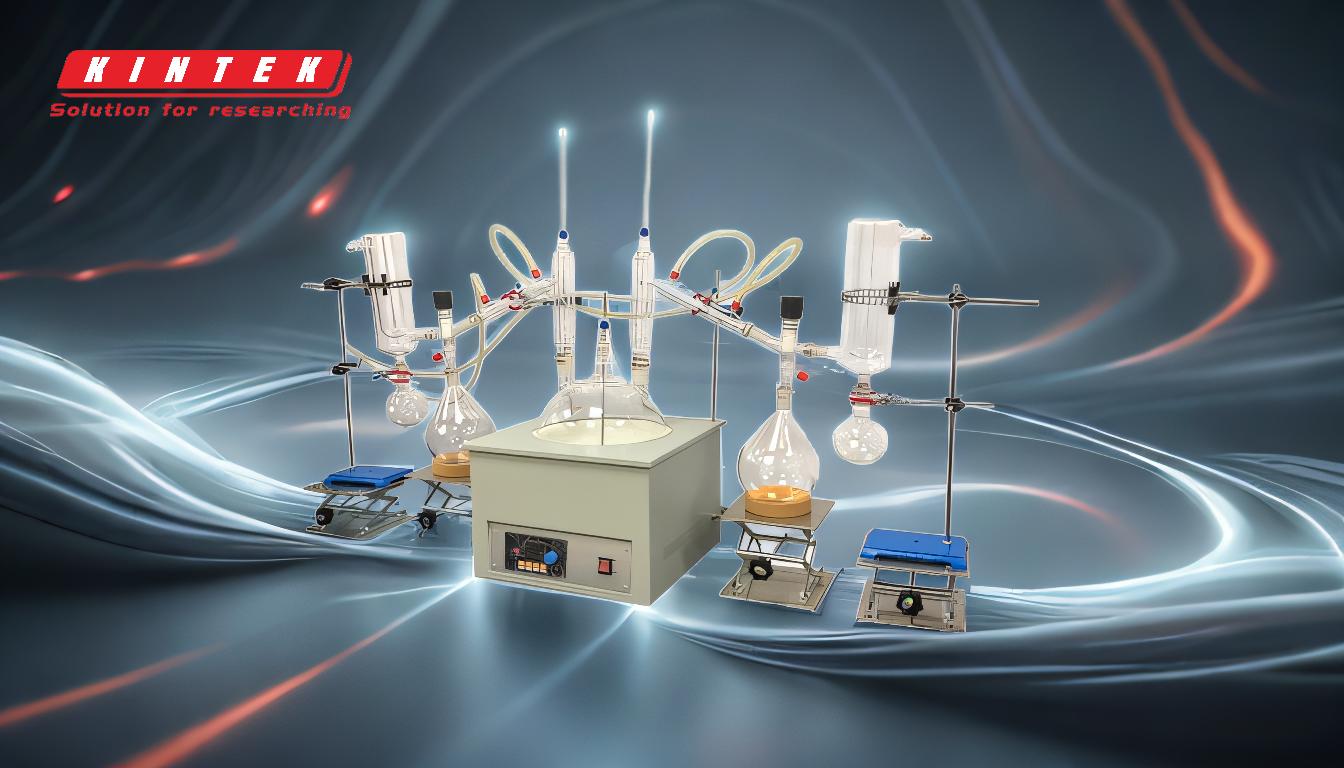Short path distillation operates within a specific temperature range to ensure the efficient separation of compounds without degradation. The heating mantle used for the boiling flask typically operates between 100°C and 250°C, with a maximum recommended temperature of 220°C to avoid compound degradation and safety hazards. The condenser is maintained at around 50°C using a chiller to ensure proper recondensation of vapors. The process benefits from reduced pressure, which lowers the boiling point of the material, allowing distillation at lower temperatures. This method is suitable for high-purity separations and requires minimal equipment compared to conventional distillation techniques.
Key Points Explained:

-
Temperature Range for Heating Mantle:
- The heating mantle used in short path distillation typically operates between 100°C and 250°C (212°F to 482°F). This range ensures that the material in the boiling flask is heated sufficiently to vaporize the desired compounds.
- The maximum recommended temperature is 220°C. Exceeding this limit can lead to the degradation of sensitive compounds and pose safety hazards, such as overheating or equipment failure.
-
Condenser Temperature:
- The condenser is maintained at around 50°C using a chiller. This temperature ensures that the vapors recondense efficiently without overheating or losing volatile compounds.
- Proper temperature control in the condenser is critical to prevent compound deposition on the sides of the apparatus and to achieve high-purity distillates.
-
Role of Vacuum in Temperature Reduction:
- Short path distillation operates under reduced pressure (vacuum), which significantly lowers the boiling point of the material. This allows the process to occur at lower temperatures compared to standard atmospheric pressure distillation.
- The reduced pressure minimizes the risk of thermal degradation, making it suitable for heat-sensitive compounds.
-
Equipment and Setup:
- Short path distillation requires specialized glassware, such as boiling flasks, condensers, and cold traps, but does not need heavy-duty equipment like conventional distillation methods.
- The setup includes a vacuum pump, chiller, and thermometer probe to monitor and control the temperature throughout the process.
-
Process Monitoring and Adjustment:
- The distillation process is monitored closely. If the distillation slows, it may indicate the end of a fraction, and adjustments, such as temperature or vacuum level, should be made accordingly.
- Proper monitoring ensures the purity of the distillate and prevents overheating or degradation.
-
Advantages of Short Path Distillation:
- The method is ideal for high-purity separations and is particularly useful for heat-sensitive compounds due to its low-temperature operation.
- It requires minimal workspace and is more efficient than traditional distillation methods, making it suitable for small-scale or laboratory applications.
By maintaining precise temperature control and leveraging the benefits of reduced pressure, short path distillation achieves efficient and high-purity separations while minimizing the risk of compound degradation.
Summary Table:
| Component | Temperature Range | Key Details |
|---|---|---|
| Heating Mantle | 100°C - 250°C | Maximum recommended: 220°C to avoid degradation and safety hazards. |
| Condenser | ~50°C | Maintained using a chiller for efficient recondensation of vapors. |
| Vacuum Pressure | Reduced pressure | Lowers boiling points, enabling distillation at lower temperatures. |
| Equipment | Specialized glassware | Includes vacuum pump, chiller, and thermometer probe for precise control. |
| Advantages | High-purity output | Ideal for heat-sensitive compounds and minimal workspace requirements. |
Optimize your short path distillation process—contact our experts today for tailored solutions!











